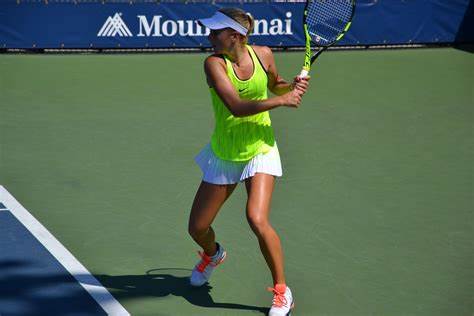Introduction to Tennis Tennis is a globally popular sport that involves hitting a ball over a net into the opponent’s court using a racket. It can be played individually against a single opponent (singles) or with two teams of two players each (doubles). This guide will walk you through the basics, tailored for complete beginners and parents looking to get their children started in tennis.
Understanding the Rules of Tennis
- Objective: The goal is to hit the ball over the net into the opponent’s court in a way that the opponent cannot return it.
- Scoring: Points are scored in a sequence of 15, 30, 40, and game. Matches are divided into sets, won by the first player or team to win six games by a margin of two.
- Playing Court: A rectangular flat surface, 78 feet long and 27 feet wide for singles matches. The court is divided into two halves by a net.
Basic Techniques
- Forehand and Backhand Strokes: Fundamental shots in tennis, used to hit the ball back and forth over the net.
- Serve: Starting play requires hitting the ball diagonally across the court into the opponent’s service box.
- Volley: A shot made by hitting the ball before it bounces on the ground.
Equipment Needed
- Racket: Choose one suitable for your grip size and skill level.
- Tennis Balls: Specific balls are used based on the court type.
- Proper Footwear: Shoes designed for lateral movement and court surface.
Getting Started with Practice
- Fundamental Drills: Practice hitting against a wall or with a coach to develop your strokes.
- Join a Club: Many tennis clubs offer coaching and the ability to play against different levels of opponents.
- Watch and Learn: Observing professional matches can help understand strategies and techniques.
Joining a Team or Playing Competitively
- Junior Tournaments: Essential for competitive experience and ranking.
- High School Tennis: Provides structured competition and potential scholarship opportunities.
- College Tennis: A pathway to professional tennis, offering exposure and advanced training.
Pursuing a Professional Career
- Training and Development: Continuous improvement of skills with professional coaching.
- Professional Circuits: Participate in ITF, ATP, or WTA tours to earn rankings.
- Sponsorships and Endorsements: As you progress, these can support your financial needs and offer opportunities to compete internationally.
For Parents: Guiding Your Child in Tennis
Introducing your child to tennis involves more than just finding the right coach and attending matches. As a parent, your role is crucial in shaping their experience and development in the sport. Here are expanded tips and insights to help you effectively support your child’s tennis journey:
- Educational Integration: Balance tennis training with educational commitments. Work with your child to manage their schedule, ensuring they have ample time for both schoolwork and tennis practice.
- Emotional Resilience: Tennis can be as challenging mentally as it is physically. Teach your child to handle wins and losses with grace, viewing each match as an opportunity to learn and improve.
- Physical Health Management: Oversee your child’s physical health by ensuring they get proper nutrition and adequate rest. Collaborate with coaches to monitor their physical condition to prevent overuse injuries.
- Long-Term Planning: Discuss long-term goals in tennis, whether they aim to play competitively in college or aspire to turn professional. Help them understand the steps required to reach these goals and the commitment needed.
- Social Development: Encourage your child to interact and build relationships with peers within the tennis community. Social skills are as crucial as physical and technical skills in their development.
- Financial Planning: Be prepared for the financial commitment that competitive tennis involves. From equipment to travel for tournaments, planning your finances to support your child’s tennis career is essential.
- Regular Feedback: Engage with coaches and trainers regularly to receive feedback on your child’s progress. This helps in adjusting training methods and addressing any areas of concern promptly.
By taking an active and supportive role in these areas, you can significantly influence your child’s success and enjoyment in tennis.
Conclusion Tennis offers a fulfilling path from beginner to professional, combining physical prowess with mental strategy. Whether you’re a young aspiring player or a parent guiding your child, the journey in tennis can be rewarding and rich with opportunities for growth and achievement.
This article provides a detailed roadmap on how to begin playing tennis, the progression through different levels, and tips for parents on supporting their child’s tennis aspirations, ensuring a comprehensive understanding for anyone new to the sport.



